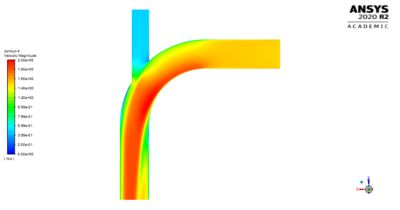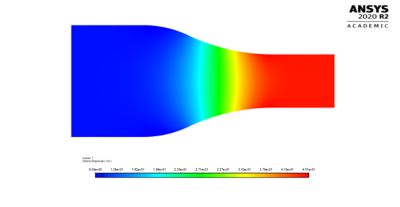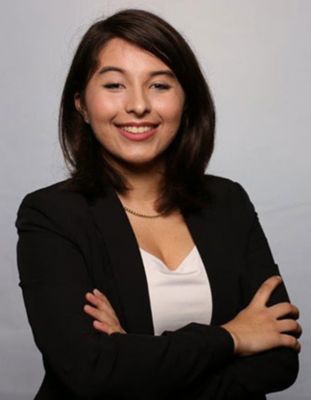-
-
学生向け無料ソフトウェアにアクセス
Ansysは次世代の技術者を支援します
学生は、世界クラスのシミュレーションソフトウェアに無料でアクセスできます。
-
今すぐAnsysに接続!
未来をデザインする
Ansysに接続して、シミュレーションが次のブレークスルーにどのように貢献できるかを確認してください。
国および地域
無料トライアル
製品およびサービス
リソースとトレーニング
当社について
Back
製品およびサービス
ANSYS BLOG
June 29, 2021
Ansys Innovation Courses Help Second-Year University Students “Visualize” Thermodynamics
About 15 years ago, Ivana Milanovic, a professor of mechanical engineering at the University of Hartford, Connecticut, attended a meeting where a group of fellow engineering educators were deciding whether simulations could play a role in helping to educate undergraduate students.
“I was the only proponent of using simulations in the classroom,” she says.
Though she was surprised at this reaction, Milanovic did some digging and soon learned that the negative stance of her colleagues was in line with accepted thought. A study by Allwright and Tubman1 in 1993 concluded that the use of industrial software does not enhance undergraduate understanding of fundamental engineering principles. Furthermore, commercial software took too much time to learn and was not tailored for individual courses, the authors wrote.
Ivana Milanovic, University of Hartford, Connecticut
Obviously, a lot has changed in 15 years, and simulations have gradually found their way into the curriculum, mostly in graduate courses devoted to finite element analysis (FEA) or computational fluid dynamics (CFD). Still, Milanovic was determined to find a way to introduce simulation into her second-year thermodynamics course as a way of helping students grasp the difficult concepts of through visualization.
Her breakthrough came last summer, with the introduction of Ansys Innovation Courses.
Ansys Innovation Courses Show the Way Forward
A mere seven days after the launch of the Ansys Innovation Courses in July 2020, Milanovic had decided that they were the key to introducing simulation to second-year university students.
“I went through the materials and was impressed by their wealth and depth,” she says. “It was not only the instructional videos that were provided but the extra PDFs, the extra information on the side that matters both to me and my students.”
She cites two assets that are of particular value: pre-packaged problems that remove the burden of developing problems from her, and the fact that each problem comes with its own mesh for simulation, so students don’t have to spend excessive time setting up the problem.

“I don't want to deal with meshes for undergraduate students, because really if I start explaining meshes and how to create the best mesh, it will severely impede my ability to teach thermodynamics or any other course,” Milanovic says.
Ansys Innovation Courses allow her to concentrate her lectures on teaching the fundamentals of thermodynamics. She doesn’t teach simulation in the classroom — the students learn about that on their own through the online courses.
How Students Benefit From Online Learning
Milanovic assigns her students simulation homework that focuses on introductory problems, such as fluid flow through a converged nozzle. From their evaluations of the course, she finds that using simulations instead of just a calculator to determine the results of such fundamental problems helps her students to see and learn more.


Students' simulation homework focuses on introductory problems, such as fluid flow through an elbow and a converged nozzle.
“When you do a thermodynamics problem on paper, you use conservation laws and you come up with one number as a result,” she explains. “Students come up with that one number, but do they really understand what the number means?”
The results of a simulation, on the other hand, reveal a colorful graphic representation of a range of flows through the nozzle, with the colors indicating the varying velocities of flow in the fluid stream.
“I think that the real learning starts when students become comfortable with setting up and running simulations,” Milanovic says. "When they see the flow through the nozzle or when they see heat transfer in some example, they start thinking, ‘OK, what does this all mean?’ And they understand that these problems do not have one numerical answer. They learn that the answer is more often a velocity field, a temperature field or a pressure field.”
The students also benefit from a “vertical integration” of courses that gradually give them the skills they will need as real-world engineers. Prior to her changes to the second-year thermodynamics courses, engineering students at the University of Hartford were introduced to computer-aided design (CAD) in a first-year graphic communication course and then focused on theory in their second year before encountering CAD again in their third year. Keeping their digital engineering education going at full steam by including simulation in the second year helps students develop the proficiency to complete a required capstone project before they graduate. That’s vertical integration.
“Where the revolution comes is when the professors like me grab Ansys Innovation Course materials and go into the undergraduate classroom with second-year students,” Milanovic says. “And if you grab them in the second year, of course, when we come to the capstone, they will do their project with the help of simulation.”
What Simulation Learning Success Looks Like
Student grades and their responses on digital assignment surveys indicate that incorporating simulations into second-year thermodynamics courses is having a positive effect. An average grade of 86 on paper-based homework assignments was slightly less than the average of 90 on the simulation-based assignments. A digital assignment survey that Milanovic asked the students to complete indicated that the students believed that the simulation assignments were useful in developing simulation skills and that the supporting materials provided in the Ansys Innovation Courses were informative. Finally, the student evaluation of teaching surveys yielded a course mean of 4.8, which was higher than the department mean score of 4.3.
Robert Galvez
Aikaterini Stylianides
Jeffrey Severino
Angie Perez
Ultimately, success should be measured by students’ accomplishments in school and after graduation. Milanovic is proud to show a portfolio of her students’ success stories using simulation. These include a Robert Galvez who is the first recipient of a National American Society of Mechanical Engineers (ASME) award at the University of Hartford, for a paper that published in 2020 at the ASME fluids division conference; Aikaterini Stylianides who earned $20,000 for her simulations and published papers and is currently a NASA Pathways intern; Jeffrey Severino who wrote an engineering simulation web app that was presented on Engineering.com, also a NASA Pathways intern; and Angie Perez who was awarded the Dorothy Goodwin Scholarship for her research using Ansys Fluent.
Milanovic has many more successful students she enjoys talking about, and all the stories have simulation at their core.
“Irrespective of which kind of engineer you are — a mechanical engineer, electrical or any other specialty — you will have to have a knowledge of simulations in your professional career,” she tells all her students. “It is inevitable at this point.”
To learn more about Ansys Innovation Courses visit ansys.com/courses.
1. Allwright, R. D., & Tubman, K. A.(1993). The use of computer-assisted learning within undergraduate thermofluids courses. Int. J. Mech. Eng. Education, 22(1).




